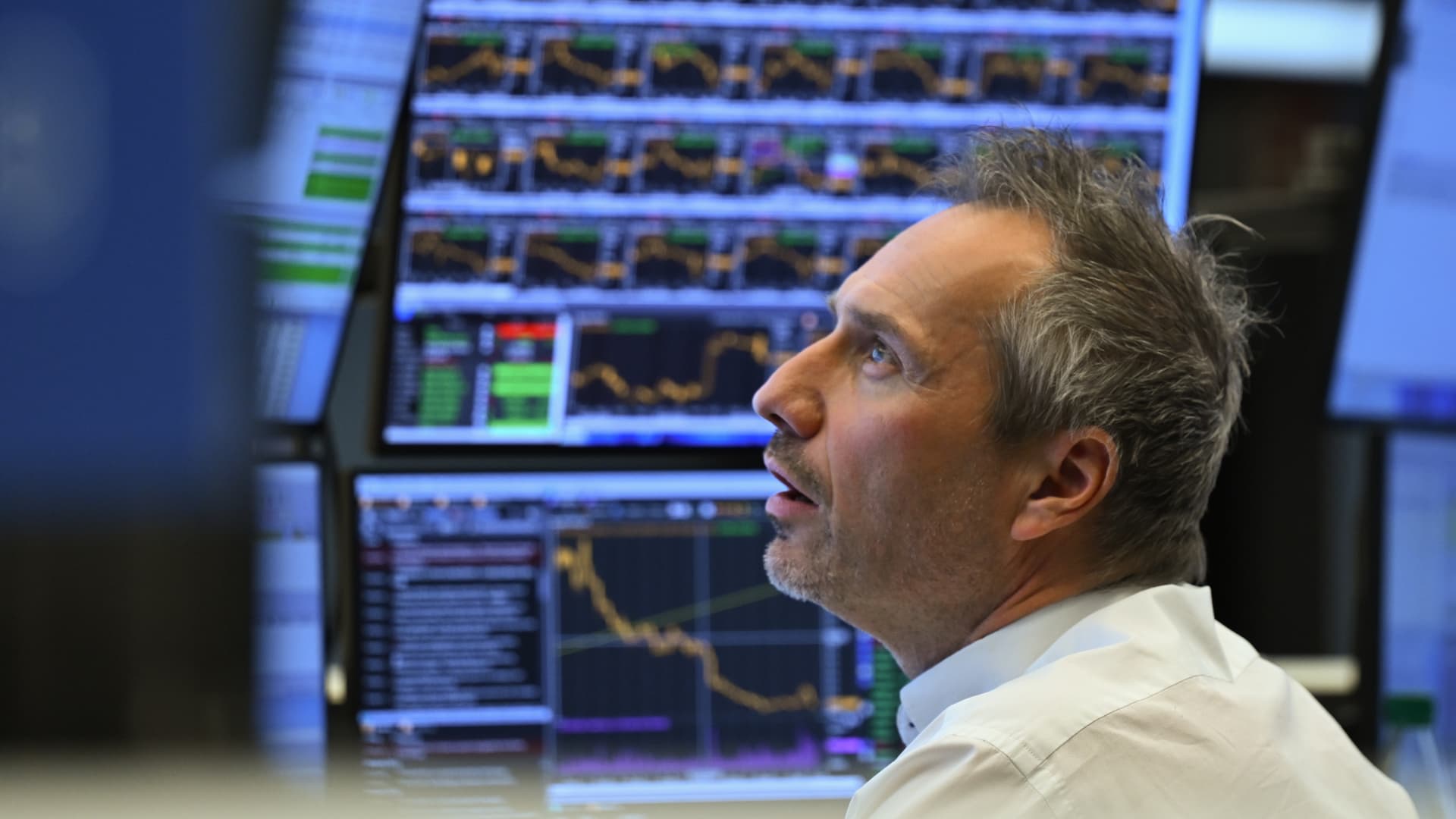The German DAX index continued its gains on Friday, with the index closing in on the all-time high it touched on just four days earlier. By the end of Friday, the index was around 0.6% off of its record high. During earlier trade in the session, it had been even closer to its lifetime high price. The DAX has risen by 19% since the beginning of the year, with European stocks frequently outperforming their U.S. counterparts as Wall Street grappled with selloffs. The upward trajectory came as investor optimism was boosted by Germany electing a new coalition government , a historic vote that paved the way for the country to ramp up defense spending. A so-called “sell America” sentiment that saw money flowing out of U.S. assets as U.S. President Donald Trump’s trade policies spooked traders also played a role. But since the U.S. and China agreed to a 90-day pause on tit-for-tat tariffs on Monday, stocks on Wall Street have since reversed course and enjoyed a bumper rally . Lingering geopolitical uncertainty and the flow of money back into American equities is now clouding the outlook for German stocks and dividing strategists and analysts’ opinions on how much further the Dax’s good fortunes could have to run. Deutsche Bank ‘the most bullish’ on German stocks Taking a bullish view was Maximilian Uleer, research analyst at Deutsche Bank. While his team expects the S & P 500 ‘s recent outperformance to persist in the short term as U.S. companies will be the bigger beneficiary of Washington and Beijing’s bilateral tariff cuts, they do not believe the trend will continue. “We would [emphasize] the ‘short-term’,” he said, arguing that although tariffs were lower than feared for now, they would still be a bigger burden for U.S. companies than their European and German counterparts. “Political uncertainty is higher in the U.S. than in Germany,” Uleer said. “Leaving out Autos, sequential earnings momentum is more favourable in Europe. Valuations are more favourable in Germany. The fiscal outlook is significantly more favourable in Germany. The rates environment is more favourable in Germany. A potential ceasefire between Ukraine and Russia would be more favourable for Germany.” Deutsche Bank has a target price of 25,000 points for the DAX by the end of the year, a premium of over 5% on Friday’s price. “Index forecasts for the DAX have been beaten significantly in the last 2 years and we expect the same to happen this year,” Uleer noted. “We have been the most bullish and still are … The relative performance might stall short term, the directional upside remains.” Marc Ostwald, chief economist and global strategist at London’s ADM Investor Services, agreed that there was likely more upside ahead for the DAX. He said a broad improvement in risk appetite amid the U.S.-China tariff pause, on top of overall positive European earnings, was benefiting German stocks. However, Ostwald also noted there were caveats at play, including uncertainty around U.S.-EU trade relations and questions on whether the new German coalition “actually turns words into action to stimulate the economy.” “The [DAX] upside may run into some headwinds short-term given next week’s May equity options expiry, which will likely cap gains, but barring some adverse trade or geopolitical news, which continues to be an elevated risk, this rally has further to run,” he said. Investor ‘addiction to North America’ could hurt upside Dan Coatsworth, investment analyst at AJ Bell, said Europe had been a “natural place to hunt” for cheap opportunities when a so-called “sell America” mentality gripped financial markets earlier this year. “Germany has stood out from the crowd because of its decision to ramp up spending on defence and infrastructure, creating a tailwind for various companies in the Dax index,” he said – although he pointed out that Frankfurt’s status as a cheap alternative to Wall Street was faltering. “The Dax is now trading at its most expensive level in four years at 14.8 times next 12 months’ earnings. While that is still cheap relative to the US (the S & P 500 is on 20.4 times forward earnings), it’s no longer the bargain that the German index used to be,” he said. “The market has priced in so much good news which means you have to ask what else is needed to keep driving the index upwards.” He argued that the S & P 500’s recent rally may also have convinced investors that “all is not lost Stateside.” “A lot of people … may not be able to fully give up their addiction to North America,” he said. “There’s a risk that profits are banked on German equities and proceeds reallocated to the US. [But] certain investors might want to hedge their bets and keep money invested in different parts of the world rather than going all-in on the US again.” Also striking a more cautious tone was Carsten Brzeski, global head of macro at Dutch lender ING. “Looking ahead, I am not giving any estimates for the DAX but it is clear that if the US economy can defy a recession and the talks about de-dollarisation appear to have been premature, we could indeed see a reversal of some of the flows into European stock markets,” he explained. “At the same time, given the high expectations that at least stock markets have for the German government and future growth, investors could get disappointed once they realise that it takes longer than hoped for any fiscal stimulus to reach the real economy.”
A trader watches his monitors on the trading floor of the Frankfurt Stock Exchange. Photo: Arne Dedert/dpa (Photo by Arne Dedert/picture alliance via Getty Images)
Arne Dedert | dpa | Picture Alliance | Getty Images











